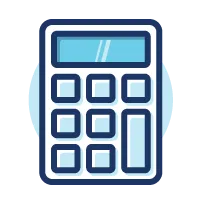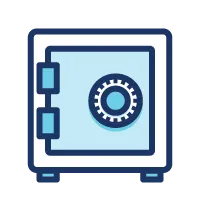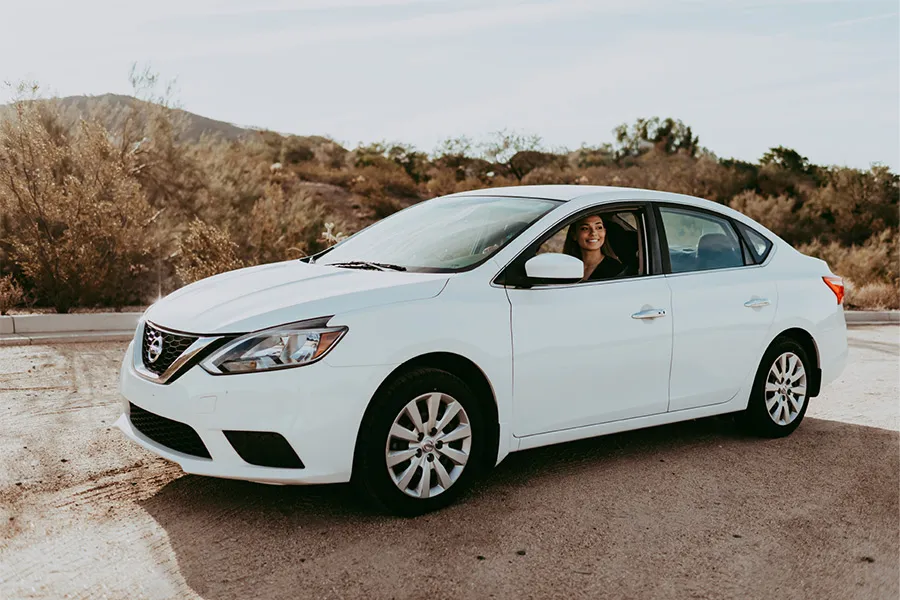If you’re still paying off your car loan, but considering upgrading your ride, you may be asking – “Can I trade in my car while I’m still making payments?” The answer is YES, you absolutely can trade in a financed car.
Before rushing down to the dealership, there are some things you will want to know to be certain you are making a wise financial decision. When trading in a car you’re still making payments on, it’s easy to end up creating a financial mess you can’t easily get out of.
The first thing you will need to do is determine whether you have positive or negative equity in your vehicle.
When You Have Positive Equity
Positive equity is when your car is worth more than you owe on the loan. This is the ideal situation when considering trading in your car while still making payments on your loan.
For example, let's say you owe $10,000 on your vehicle and the car is worth $14,000. This means you have $4,000 of positive equity in the car and can use that $4,000 towards the purchase price of a new car.
Trading in your car
The value of your vehicle
$14,000
Amount owed on your vehicle
$10,000
Positive equity, this can be used towards a new car
$4,000
If you were looking to finance a $30,000 new car, now you can trade in your current car and finance a new car for $26,000.
Using the $4,000 to finance a new car
The amount to finance a new car
$30,000
Trade in value for your old car
$4,000
The remaining amount to finance your new car
$26,000
When You Have Negative Equity
On the other hand, if you owe more on your car than it’s actually worth, you have negative equity.
For example, if you owe $15,000 on your vehicle but it's only worth $12,000, you have $3,000 of negative equity. Now instead of being able to apply the equity to your next car loan, you will now have to come up with the $3,000 difference before you can make the deal happen.
Trading in your car
The value of your vehicle
$12,000
Amount owed on your vehicle
$15,000
Negative equity, the amount you need to pay off
-$3,000
We’ve all heard that the value of a car drops immediately after you drive it off the dealership lot, so newer car owners may find out they have negative equity in their vehicle.
There are three options when you have negative equity.
- Best Option: Pay the Difference Out of Pocket. The best decision you can make when you're facing negative equity is to save up cash and pay the difference out of pocket. Once you determine how much you owe and how much the dealer is willing to pay you for your current car, write a check for the difference to release the title.
- Good Option: Delay the Trade In. A good option but not always ideal is to delay the trade in until you are no longer upside down or until you save up enough cash to pay the difference.
- Last Option: Roll the Negative Equity into Your New Car Loan. The dealer will almost always suggest you simply roll that negative equity of your current loan into your new auto loan. This means you’re financing your new car’s value plus the remaining amount you have to pay off.
How to Trade in Your Car with a Loan
When you trade in a financed car to the dealership for a new financed car, the lender takes over the loan and then pays it off. Whether you have positive or negative equity will determine if you will need to make up the difference or apply the equity towards the new loan.
However, it's still wise to have a step-by-step plan before you start the process of trading your vehicle into the car dealership.
1. Determine How Much You Owe on the Car
The first thing is to determine how much you owe on the vehicle. Simply make a call to your lender and ask for the 10-day payoff letter.
This will give you the exact amount you owe to pay off and close out your current loan.
2. Find Out How Much Your Car is Worth?
Next determine how much your current car is worth. You can visit sites like Kelley Blue Book and J.D. Power to determine the fair price for your car's trade in. Keep in mind, the trade in value will likely be lower than selling your vehicle yourself.
3. Get Financing Ahead of Time
One of the best moves you can make when trading in your car to the dealership is to get financing ahead of time.
Instead of getting financing through the dealer, visit a local credit union or bank to get much better rates than what the dealership can offer you. In addition, when working with a local credit union like OneAZ Credit Union in Arizona, you can sit down with a banker and determine the best options whether you have positive or negative equity in the car.
You can even use a checklist to get everything ready ahead of time to make the application process for a new loan seamless.
Getting financed ahead of time allows you to focus on negotiating the best deal for the trade in versus trying to also negotiate the best interest rate on your new auto loan.
4. Shop Around
Just like with anything else in life, the best deal isn't always the first deal you find. Shop around and keep in mind that dealerships need to make the trade in work more than you do.
If the deal isn‘t what you wanted, then walk away and visit the next dealership until you find what you're looking for at the price you are comfortable with.
5. Get Your Car Ready for Trade In
This may be the most overlooked step when trading in a car with a loan. The difference in whether you skip this step or not could be the difference in thousands of dollars you will either save or pay out.
- Clean the Car. According to AutoTrader, "used-car sellers can expect upwards of a 200% return on their investment by cleaning their car before trading or selling their ride." To put this into real numbers, spending $300 to have your vehicle cleaned beforehand can result in up to a $600 increase in sale or trade in value.
- Make small repairs. Replace light bulbs that are worn out, fix any chips in the windshield, and change out any inexpensive replacement parts that you can often find through the dealer or automotive store.
- Gather important documents. Bring your vehicle registration, your proof of auto insurance, a list of car repairs or maintenance records, and any other important documents pertaining to your current vehicle.
6. Negotiate the Best Price
Oftentimes, dealers will use the four-square method when negotiating your deal. Each square represents one of each of the following: your trade in value, the price of the new car, your down payment, and your monthly car payment.
Use an auto loan calculator to make sure the new vehicle you're trading in fits inside your budget, along with your down payment and the monthly payment you can afford.
Determine these numbers before you go to the dealer to negotiate and don't leave with a new vehicle unless the numbers fit inside your monthly budget.
Frequently Asked Questions
Depending on your next steps when it comes to trading in a financed car, there may be more questions you are still not quite sure about.
What Does "Rolling Over" a Loan Mean?
The term rolling over a loan is when you take the negative equity from your current vehicle and add it to the balance of your new loan.
Does a Trade In Count as a Down Payment?
Yes.
If you have equity in your vehicle, you can take that equity and apply it towards the down payment of either a new loan or even a lease.
If the equity is smaller, you can take the smaller amount and apply it to leasing fees and other fees required when making a new vehicle purchase.
How Soon Can You Trade in a Financed Car?
You can trade in your financed car anytime, but it may not be a good idea to do so within the first year. This all has to do with how quickly the car depreciates. In fact, Experian estimates that a new car will go down in value by 20% during that first year.
Is there a Benefit to Trading in a Car in Arizona?
Yes, drivers in Arizona have the luxury of bypassing the sales tax amount for the positive equity in the vehicle.
For example, if you live in Arizona and you go to trade in your $15,000 vehicle that you owe just $10,000, you won't have to pay sales tax on the $5,000 positive equity.
Therefore, when you apply that $5,000 to the purchase of a new car, you will only pay sales tax on the remaining loan balance left over after the $5,000 positive equity has been applied.
Is Trading in a Car Better than Selling Private Party?
It all depends on how much work you are willing to do. While trading in a car to the dealership is much more convenient, you will pay for that convenience in the form of your car bringing in less money for a trade in versus selling private party.
Can I Trade in My Car for a Leased Car?
Yes you can.
When you have positive equity with your current vehicle, you can take that positive equity and apply it to the down payment on your lease, thus reducing your monthly payments during your lease term.
Can I Trade in a Leased Vehicle?
Yes, but it's rarely a good plan.
The auto industry has the ability to calculate how much a leased vehicle will depreciate in value over your lease term. Your monthly lease payment will cover the depreciation amount and interest (profit) for the lease company.
At the end of the lease, your monthly payments have likely covered the depreciation plus interest, meaning you likely end up without any equity in the car.
Final Thoughts
Remember, the first rule of thumb is to seriously consider the consequences of rolling your negative equity into a new loan. This often keeps drivers in car loans for the rest of their lives and may not be a good deal for drivers.
Instead, ask yourself if convenience or maximum sale price is a priority for you. If saving time, effort and energy is your focus, then trading in a car with a loan will be a better fit.
But, if you are willing to spend a little more time and effort, you can definitely sell your car to a private party for more than you will get in a trade in.
APR = Annual Percentage Rate











